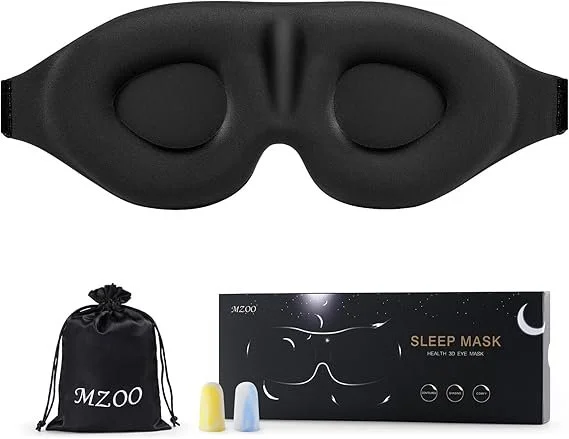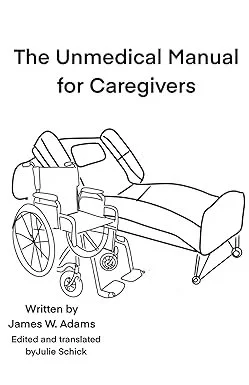10 Proven Ways to Help a Loved One Sleep Better with Chronic Pain (Caregiver Guide)
Sleep and chronic pain don’t mix well — and as a caregiver, you already know how tough nights can get. The truth is, poor sleep makes pain worse, and pain makes sleep harder. Breaking that cycle is one of the best gifts you can give your loved one (and yourself).
This guide shares practical caregiver sleep tips plus affiliate-friendly product solutions — mattress toppers, weighted blankets, herbal teas, and more — that can ease nights and make days brighter.
Remember: Sleep is half the battle. Making nights easier makes days easier.
Why Sleep is Harder with Chronic Pain
The Pain–Sleep Cycle
Pain is subjective — it can ache, throb, or burn in ways that make finding a comfortable position almost impossible. And when sleep is cut short, the body’s pain tolerance drops, creating a vicious cycle.
Caregiver Challenges at Night
If you’re helping someone with chronic pain, you might notice:
Tossing and turning throughout the night.
Trouble falling back asleep after waking.
Irritability, slowed responses, or even mild confusion the next day.
That means your own sleep takes a hit, too.
Caregiver Sleep Tips: Small Changes, Big Impact
Create a Calming Environment (Noise, Light, Temp)
The bedroom should feel like a retreat: quiet, cool, and dimly lit. No TV reruns or phone screens flashing late at night.
💡 Affiliate Fit: A good sleep mask can block stray light, while a white noise machine drowns out distractions.
Prioritize Comfort with the Right Bedding
Hard mattresses and lumpy pillows worsen pressure points. A supportive surface makes pain management easier.
💡 Affiliate Fit: Mattress toppers cushion sore joints, and weighted blankets provide gentle pressure that can ease anxiety and promote deeper rest.
Encourage Relaxation Before Bed
Wind-down routines signal to the body that it’s time for rest. Herbal teas, warm showers, or gentle stretches can all help.
💡 Affiliate Fit: Chamomile or valerian root teas promote natural calm without heavy sedatives.
Manage Pain Before Bedtime
Whether it’s heat packs, gentle massage, or prescribed medication, dealing with pain before bed can reduce midnight wake-ups.
Sleep Hygiene Strategies that Actually Work
Limit Naps: Afternoon snoozes should recharge, not replace nighttime sleep.
Ditch Screens & Caffeine: Blue light and late-night lattes are sleep killers.
Stick to a Routine: Even on bad pain days, consistency helps reset the body clock.
Watch Out for “Hospitilitis”
Why Hospitals Disrupt Sleep
If your loved one’s been hospitalized, you’ve seen it: constant interruptions, unfamiliar noises, and bright lights. This “hospital-induced insomnia” can follow them home.
Clustering Care at Home
Try grouping tasks together instead of constant interruptions — turn, reposition, and check vitals at once when possible. Protect those stretches of uninterrupted rest.
When to Seek Extra Help
If your loved one still struggles with insomnia despite trying these strategies, it may be time to:
Talk to their doctor about non-habit-forming sleep aids.
Explore cognitive behavioral therapy for insomnia (CBT-I).
Ask about pain management adjustments.
FAQs About Helping Someone Sleep with Chronic Pain
1. What’s the best sleep position for chronic pain?
Often, side-sleeping with a pillow between the knees reduces pressure on joints and the lower back.
2. Do weighted blankets really help with pain and insomnia?
Yes, they provide gentle pressure that calms the nervous system, reduces anxiety, and helps with relaxation.
3. Can herbal teas really replace sleep medication?
Not entirely, but teas like chamomile and valerian can promote calm and make falling asleep easier.
4. How can caregivers improve their own sleep while helping a loved one?
Use earplugs, create your own wind-down routine, and try to sync naps when your loved one rests.
5. What’s “hospitilitis” and how do I avoid it at home?
It’s sleep disruption caused by constant hospital interruptions. At home, cluster care tasks together to allow uninterrupted sleep blocks.
6. When should I call a doctor about sleep issues?
If insomnia lasts more than a few weeks or severely impacts daily life, professional support is needed.
Conclusion & Caregiver Takeaway
Helping someone sleep with chronic pain isn’t just about comfort — it’s about protecting their health, mood, and recovery. The right mix of sleep hygiene, caregiver strategies, and supportive products can transform restless nights into restorative rest.
👉 Sleep is half the battle. Making nights easier makes days easier.
Final Word: From Caregiver to Caregiver
Helping a loved one sleep better when chronic pain is in the mix isn’t just a “nice to have” — it’s survival. Better nights mean fewer flare-ups, calmer mornings, and more energy for both of you.
The tips above (and the tools you choose to bring into the bedroom) are part of that puzzle. But if you’re looking for real-world caregiver strategies that go way beyond sleep, I’ve put my experience into a resource you can keep on your nightstand:
It’s written for people like you — caregivers who need plain-talk guidance, not medical jargon. From sleep hygiene (like in this post) to managing stress, mobility, and daily care routines, it’s built on the real struggles and solutions we face every day.
👉 Because at the end of the day, caregiving isn’t textbook — it’s lived experience.
📌 External Resource: National Sleep Foundation – Sleep in America Poll (Pain and Sleep)
Disclaimer: This article is for informational purposes only and does not provide medical advice. Always consult with a qualified healthcare professional before making changes to your loved one’s health or sleep care routine.






